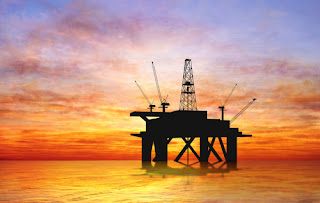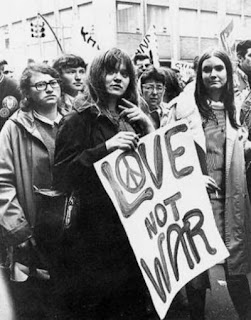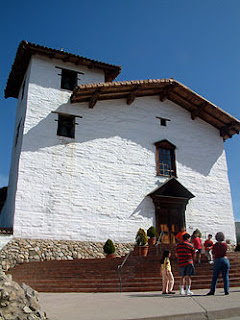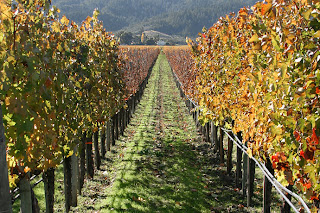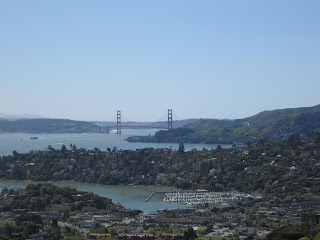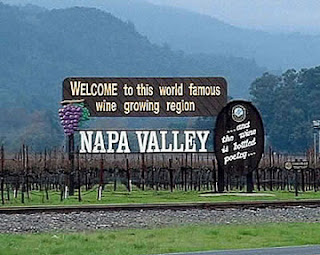The future of the Bay Area
The future of the Bay Area is unknown just like anything else in the future. However, we can speculate based off what we have learned from this web page. We know the Bay Area is a diverse region with people from all races calling it home. I foresee this going unchanged in the future. The Bay Area and specifically Silicon Valley, is the economic hub of the state. With more and more advancements in technology I foresee the technology industry in the Bay Area expanding. The Bay Area and California are known for the great weather due to the Mediterranean climate. This means very little environmental hazards, however the Bay Area and California have always been susceptible to earthquakes. Retrofitting of buildings and structures is a constant task in the Bay Area because we do not know when the next big earthquake will strike, but we know it will. The relationship between Northern California and Southern California has always been very important due to the natural resources of the North that the South needs. There has always been conflict and a sense of pride over each region so the future of relations between Northern and Southern California is unknown. California and the Bay Area will continue to grow and expand. The Bay Area is an innovative, forward thinking, and creative region that will deal with whatever the future may hold.
Hawaii and the Pacific Islands and the Bay Area
The archipelago of Hawaiian islands are submerged volcanoes created by tectonic plates and hotspots of magma. Approximately 43 million years ago, the Pacific tectonic plate moved over a hotspot in the Pacific ocean causing magma to be released out of the crust of the earth. This caused the Hawaiian ridge to be formed and eventually the string of Hawaiian islands. Most of the islands are simply submerged volcanoes created by erupting magma cooling when it hits the ocean water. The oldest islands, Lauai and Niihau were formed 5 million years ago. The Big island is the youngest of the chain of islands. Eventually in thousands of years, Loihi Seamount, and active submarine volcano, will emerge from the sea creating another island. Plate tectonics have played a huge role in the creation of the Hawaiian islands we know today.
Similarly, plate tectonics have played an important role in California and the Bay Area's history. Millions of years of plate tectonics has created the diverse landscape of hills, valleys, and mountains of the Bay Area landscape. Although there are many faults running through the Bay Area, the most notable is the San Andreas fault. It is approximately 800 miles long and forms the boundary between the Pacific plate and North America plate. These plates leave the Bay Area susceptible to earthquakes. The most famous being the 1906 San Francisco earthquake and the 1989 Loma Prieda earthquake.
Similarly, plate tectonics have played an important role in California and the Bay Area's history. Millions of years of plate tectonics has created the diverse landscape of hills, valleys, and mountains of the Bay Area landscape. Although there are many faults running through the Bay Area, the most notable is the San Andreas fault. It is approximately 800 miles long and forms the boundary between the Pacific plate and North America plate. These plates leave the Bay Area susceptible to earthquakes. The most famous being the 1906 San Francisco earthquake and the 1989 Loma Prieda earthquake.
The Pacific Northwest and the Bay Area
The Pacific Northwest and the Bay Area have some interesting similarities. For one, both lie on the coast of the of the Pacific Ocean. In addition, both regions rely on similar economic activities. Fishing has been a staple in the economy of the Pacific Northwest for many years. In fact the Pacific Northwest accounts for more than a third of the U.S. annual commercial fish catch. Similarly, many species of fish, including salmon and halibut and dungeness crab rely on the San Francisco bay as a nursery.
In the Pacific Northwest, the high technology industry has been growing in recent years and is now a major asset to the economy. Companies such as Amazon, Microsoft, and Boeing are associated with the region. Similarly, the Bay Area's Silicon Valley is the high tech hub of the U.S. and powers California's economy.
Tourism has also become more important throughout the years to the economy in the Pacific Northwest. With its beautiful natural scenery, Oregon, Washington, and British Columbia attract people from all over the U.S. annually. Activities such as fishing and rafting also attract people to the region. In comparison, San Francisco is one of the most sought after tourist destinations in the world. The unique city with it's many landmarks including Alcatraz and the Golden Gate bridge attract tourists annually. In 2011, San Francisco ranked 44th most visited city in the world, and 6th most visited in the U.S.
In the Pacific Northwest, the high technology industry has been growing in recent years and is now a major asset to the economy. Companies such as Amazon, Microsoft, and Boeing are associated with the region. Similarly, the Bay Area's Silicon Valley is the high tech hub of the U.S. and powers California's economy.
Tourism has also become more important throughout the years to the economy in the Pacific Northwest. With its beautiful natural scenery, Oregon, Washington, and British Columbia attract people from all over the U.S. annually. Activities such as fishing and rafting also attract people to the region. In comparison, San Francisco is one of the most sought after tourist destinations in the world. The unique city with it's many landmarks including Alcatraz and the Golden Gate bridge attract tourists annually. In 2011, San Francisco ranked 44th most visited city in the world, and 6th most visited in the U.S.
California and the Bay Area
Since the Bay Area is in California, this post will be dedicated to some facts about the Bay Area in reference to California.
- San Francisco and San Jose combine to make the largest urban area in Northern California and second largest in the state to Los Angeles.
- The Bay Area has five of the highest counties by per capita income in California.
- Silicon Valley, the high-tech hub of the state, was primarily used for agricultural until World War II.
- San Jose was the first capital of the state and is the oldest city.
- The organic farming movement began in the Bay Area.
- California cuisine was first created in the Bay Area.
- San Francisco bay and the Sacramento-San Joaquin delta are the most important ecological habitats in California.
- The Bay Area is home to California's two oldest colleges; University of San Francisco and Santa Clara University.
MexAmerica and the Bay Area
The Bay Area has undoubtedly been influenced by Mexican culture. Mexican influence dates back to the Spanish and Mexican era. California was first settled by the Spanish until becoming Mexican territory in 1821. It stayed Mexican territory until 1848 when California was ceded to the United States. Mexican influence is obvious in city names such as San Francisco, San Jose and San Pablo bay. Many street names in the Bay Area are also influenced by Mexican culture. Mexican culture can be seen throughout the Bay Area in pueblo style architecture especially in San Jose. There is a substantial Mexican presence in the Bay Area with almost 25% of the population being Hispanic or Latino.
The Intermontane West and the Bay Area
The California gold rush is a vital time in the history of California and the San Francisco Bay Area. When gold was discovered in California in 1848, approximately 300,000 people migrated to California that year. This influx of people had a huge impact on not only California, but the Bay Area as well. For example, San Francisco grew from a population of 200 in 1846 to 36,000 in 1852 as people from all over the world including China migrated to the Bay Area and California. This meant an increase of goods being imported and exported through the San Francisco bay. With the spike in population also came increased building of roads, schools, and towns and the Bay Area began to grow.
During the gold rush, gold-seeking miners were called forty-niners. Today the San Francisco 49ers pay tribute to the Bay Areas gold rush and its effects on the region with their name.
The Rocky Mountain Region and the Bay Area
As you move west past the Rocky Mountain range towards California and the Pacific Ocean, you will reach the Sierra Nevada mountains. The Sierra Nevada mountain range runs for 400 miles and is 70 miles long. Within the Sierra Nevada's on the border of California and Nevada lies Lake Tahoe at an elevation of 6,225 ft above sea level. Surrounded on all sides by mountains and forests, Lake Tahoe is the 2nd deepest alpine lake in North America and the 16th deepest in the world. Lake Tahoe is a major tourist attraction for people from California and Nevada with its beautiful scenery, ski resorts, and casino's on the Nevada side of the lake.
What does Lake Tahoe have to do with the Bay Area? With its proximity to the Bay Area and various year round activities Lake Tahoe is one of the most popular tourist destinations for people living in the Bay Area. Every year thousands of people flock to Lake Tahoe from the Bay Area during both the winter and summer. With only a three hour drive from most parts of the Bay Area, it is the closest ski area for Bay Area winter sports enthusiasts. During the summer, boating and water sports are extremely popular as well as hiking and mountain biking. Lake Tahoe also has many scenic beaches that are popular during the summer. The various casinos located just across the Nevada border attract vacationers year round.
The Great Plains and the Bay Area
The Great Plains region is very different than the Bay Area. The first and most obvious difference is the environmental setting. The Great Plains are relatively flat, with a gentle slope from about 1000 feet above sea level in the east to 5000 feet in the west. On the other hand, the Bay Area is a region with multiple terrains including lowlands, hills, and even a few mountains. The Great Plains hydrologic system is also very different from that of the Bay Area. Many rivers run through the Great Plains including the Missouri, Platte, Arkansas, Canadian, and Red rivers. Also, groundwater is found ans stored in underground reserves called aquifers. Although there are a few rivers in the Bay Area including the Napa and Russian river, there aren't any rivers comparable to the size and scale of the Mississipi for example. Instead, the biggest bodies of water are the San Francisco bay, the Pacific ocean and Half Moon bay located on the coast in the South Bay. Half Moon Bay is where the Mavericks surf competition is held. Surfers from around the world come to compete here and ride waves up to 50 feet tall. Lastly, the Great Plains are susceptible to tornadoes which virtually never occur in California. The biggest hazard to the Bay Area is earthquakes, which also virtually never occur in the Great Plains.
Although the Great Plains and the Bay Area have little in common, there are some similarities. The most notable similarity is the importance of agriculture. The Great Plains are the world's leading exporter of wheat providing 60 percent of the U.S. total wheat crop. Other important cash crops produced in the region include cotton, oats, and sunflowers. Being that the Bay Area is located in California, agriculture is also important to the region. Here, tomatoes, almonds, and grapes thrive in the mediterranean climate.
Although the Great Plains and the Bay Area have little in common, there are some similarities. The most notable similarity is the importance of agriculture. The Great Plains are the world's leading exporter of wheat providing 60 percent of the U.S. total wheat crop. Other important cash crops produced in the region include cotton, oats, and sunflowers. Being that the Bay Area is located in California, agriculture is also important to the region. Here, tomatoes, almonds, and grapes thrive in the mediterranean climate.
The Coastal South and the Bay Area
The Coastal South and Bay Area are two very different regions in the United States for the following reasons. Although it is known for growing specific crops quite well, such as oranges in Florida, the Coastal South is a poor region for agriculture. The soil is infertile and the hot, humid weather is restrictive to what kind of plants can grow in the region. This is very different from the Bay Area's mediterranean climate and rich soils that allow for many different crops to strive. The Bay Area is known for it's wine and high quality food production. The Coastal South is known for rich oil reserves and petroleum production. Although there is drilling off California's shores and refineries in the Bay Area, it is nothing compared to the scale of the Gulf Coast. In terms of the tertiary and quaternary sectors of the Coastal South's economy, government and military services and tourist services are key to the economy. This is in contrast to the Bay Area, which has minimal government and military presence in the economy. The economy of the Bay Area is much more relient on technology and innovation and although San Francisco is a tourist city, it cannot compare to the gulf region and places like Disney World.
The Inland South and the Bay Area
The Inland South has been a huge contributor to culture in the United States and continues to be a very distinct cultural center. Country music has come out of the South and influenced many other musical genres. The South has a strong sense of military pride and memorializes war heroes such as Robert E. Lee. Southern traditions have influenced many aspects of American living to this day.
The opposite of culture is counter culture. Counter culture is a subculture that defies mainstream societies norms, values, behaviors, and expectations. The Hippie counter culture ideals were peace, love, freedom, music, sexual liberation and harmony. They were political activists and opposed the Vietnam war by protesting and burning draft cards. Hippie's believed in a deeper spiritual connection with ones self and the world. Psychedelic drugs, yoga, and meditation were used to expand ones consciousness.
There have been many different counter culture era's throughout history but the most prominent in the United States was the Hippie counter culture of the 1960's and 70's. During this era the Bay Area was a key region for counter culture. San Francisco, specifically Haight-Ashbury street, became a haven for hippies and they flocked to the city during this era. Berkeley was also a popular city for the counter culture movement. Many young, white, UC Berkeley students participated in the movement. From this era new cultural ideals were created that are still present today. The Bay Area continues to be a very liberal region especially in cities such as Berkeley. To this day there are still many signs of the influence of counter culture in the Bay Area.
The Great Lakes, Corn Belt, and Bay Area
The Great Lakes and Corn Belt region varies in many ways from the Bay Area. This region is considered the "heartland" of the United States because there is a perception associated with the Great Lakes and Corn Belt of "true American values" being present here. This belief is in contrast to the "foreign" influences on the East and West coast of the United States.
In terms of the Bay Area, foreign influence is very present in this region due to its location on the Pacific coast with easy access to sea travel. For example, San Francisco has the largest China town in the United States due to immigration from Asia across the Pacific ocean. Hispanic influence is also very evident throughout the Bay Area and California. For example, San Jose is the oldest city in California founded as a Spanish colony in 1777. The city still bears the Spanish influenced name and classic Spanish architecture is present throughout the city.
The Great Lakes and Corn Belt region has been historically known for its manufacturing industry. Cities such as Detroit, with its automotive industry, have been vital to the economy in this region. The Bay Area differs from the Great Lakes and Corn Belt because the economy is powered by the technology industry.
Silicon Valley is not only the economic hub of the Bay Area, but of California. It is considered the United States hub of high tech innovation and development. Silicon Valley is home of the startup tech business and many fortune 500 companies. New technologies and services are constantly being created here. Although there is an aspect of manufacturing that comes with the development of technology such as computers and smart phones, this high tech industry is powering the Bay Areas economy.
In terms of the Bay Area, foreign influence is very present in this region due to its location on the Pacific coast with easy access to sea travel. For example, San Francisco has the largest China town in the United States due to immigration from Asia across the Pacific ocean. Hispanic influence is also very evident throughout the Bay Area and California. For example, San Jose is the oldest city in California founded as a Spanish colony in 1777. The city still bears the Spanish influenced name and classic Spanish architecture is present throughout the city.
The Great Lakes and Corn Belt region has been historically known for its manufacturing industry. Cities such as Detroit, with its automotive industry, have been vital to the economy in this region. The Bay Area differs from the Great Lakes and Corn Belt because the economy is powered by the technology industry.
Silicon Valley is not only the economic hub of the Bay Area, but of California. It is considered the United States hub of high tech innovation and development. Silicon Valley is home of the startup tech business and many fortune 500 companies. New technologies and services are constantly being created here. Although there is an aspect of manufacturing that comes with the development of technology such as computers and smart phones, this high tech industry is powering the Bay Areas economy.
Megalopolis and the Bay Area
In 1961, the French geographer Jean Gottmann coined the term megalopolis to describe the densely populated urban corridor of the northeastern United States. The cities of San Francisco and San Jose in the Bay Area can be considered a megalopolis. These two urban areas combined are the 55th largest urban areas in the world, second in California, and first in Northern California. Similar to megalopolis, these are two relatively small, but very densely populated cities with huge economies. In fact, San Francisco is the second most densely populated city after New York. San Jose has the biggest economy in California and is the technological hub of the United Sates. San Jose and San Francisco have the second largest fortune 500 companies to the megalopolis of New York. These cities also held the number one rank in 2009 for households with $1 million assets, New York being second. If New York is the megalopolis of the East Coast, the Bay Area is the megalopolis of the West coast.
The Atlantic Periphery and the Bay Area
The Atlantic periphery is a region consisting of multiple states including Maine, New Hampshire, Vermont, and New York. Although the Bay Area is one region in the state of California it can be compared to the Atlantic Periphery. The Bay Area is similar to the Atlantic Periphery in that it is a region consisting of multiple cities and counties. The Bay Area can be broken down into the following sub-regions: East Bay, North Bay, Peninsula, San Francisco, San Jose and the Silicon Valley, and Santa Cruz and San Benito.
The East Bay is located on the eastern side of the San Francisco bay and is made up of Alameda and Contra Costa counties. The East Bay includes Oakland, Berkeley, Richmond, Emeryville and many others. My hometown of Pinole is also located in the East Bay. The East Bay is densely populated and very diverse. Pixar studios is based out of the city of Emeryville. Oakland is home to the Bay Area's largest sea port and home to the Oakland Raiders, Oakland A's, and Golden State warriors. Berkeley is famous for it's hippie culture and the main UC Berkeley campus is located here.
The North bay is located on the North side of the San Francisco bay and the North end of the Golden Gate bridge. It encompasses Marin county, Napa county, Sonoma county, and Solano county. Although this is a very rural region in the Bay Area, Marin county is the wealthiest county in the state. Napa county is wine country where vineyards run as far as the eye can see. There is also a lot of farmland in this region.
The Peninsula is located between San Francisco and the Silicon Valley but does not include either. Sn Mateo and Santa Clara county overlap in this region. Cities making up this region include Palo Alto, Half Moon Bay, and Burlingame. This area is mainly suburban neighborhoods and is very diverse.
San Francisco is at the northern most part of the peninsula and surrounded by water except to the south. It is a small city in terms of area, only 46.9 square miles, in which 805,000 people live. San Francisco is the most densely populated city in the US after New York. San Francisco attracts the most commuters on a daily basis, however population growth hasn't increased. This is due to lack of space and increasingly high property values. It is a very diverse city with many historical neighborhoods such as the Tenderloin and Castro. San Francisco is home of the World Champion Giants and the 49ers (for now).
San Jose and the Silicon Valley is the biggest urban area in California after Los Angeles. It is located in the southern Bay Area. This region is the technology capital of the United States and hence has received the nickname Silicon Valley. It is home to Apple, Facebook, Google, eBay and many more large companies. San Jose was California's first capital and the oldest city in the state. San Jose is densely populated, about 2 million residents, making it the tenth most populated city in the US and is ethnically diverse. San Jose is home to the San Jose Sharks and San Jose Earthquakes. Santa Clara is a near by city where Stanford is located and the new 49ers stadium is being built.
Santa Cruz and San Benito are considered parts of the Bay Area, but that is controversial. These cities are located on the coast south west of San Jose in the Santa Cruz mountains. Santa Cruz is a historically liberal city and home to UC Santa Cruz. Similar to Santa Monica, Santa Cruz has a many beaches and a beach boardwalk with roller coasters, rides, and a ferris wheel.
The Bay Area economy
The Bay Area has always been a key port city. San Francisco, Oakland, Alameda, Richmond and many other cities have ports located on the bay. These ports combined with railroad transportation make the Bay Area prime for importing and exporting of goods. For example, Oakland is a major railroad terminal and the fifth largest container shipping port in the United States.
California has an economy that can compare to other countries and the Bay Area is leading California's economy. In 2012, the Bay Area had a GDP (Gross domestic product) of $535 billion which ranks 19th in the world compared to national economies. In addition, the Bay Area had the highest GDP per capita in the United States at about $74,000. The Bay Area has the highest concentration of research laboratories, venture capital firms, and top ten ranked graduate and law schools including UC Berkeley and Stanford.
The economic hub for the Bay Area is the Silicon Valley located in San Jose. The Silicon Valley is home to Google, Facebook, Apple, Yahoo! and many other leaders in technology. Between San Jose, San Francisco, and Oakland, the Bay Area has the second most fortune 500 companies in the United States after New York. Silicon Valley generates most of the Bay Area's GDP.
The Bay Area is known for its agriculture, organic farming, and sustainable energy. It is also home to Napa valley, known famously as wine country. This production of high quality food and wine contribute greatly to the economy.
With all this being said, the Bay Area is known as one of the most expensive regions to live in the country.
California has an economy that can compare to other countries and the Bay Area is leading California's economy. In 2012, the Bay Area had a GDP (Gross domestic product) of $535 billion which ranks 19th in the world compared to national economies. In addition, the Bay Area had the highest GDP per capita in the United States at about $74,000. The Bay Area has the highest concentration of research laboratories, venture capital firms, and top ten ranked graduate and law schools including UC Berkeley and Stanford.
The economic hub for the Bay Area is the Silicon Valley located in San Jose. The Silicon Valley is home to Google, Facebook, Apple, Yahoo! and many other leaders in technology. Between San Jose, San Francisco, and Oakland, the Bay Area has the second most fortune 500 companies in the United States after New York. Silicon Valley generates most of the Bay Area's GDP.
The Bay Area is known for its agriculture, organic farming, and sustainable energy. It is also home to Napa valley, known famously as wine country. This production of high quality food and wine contribute greatly to the economy.
With all this being said, the Bay Area is known as one of the most expensive regions to live in the country.
Subscribe to:
Comments (Atom)




















